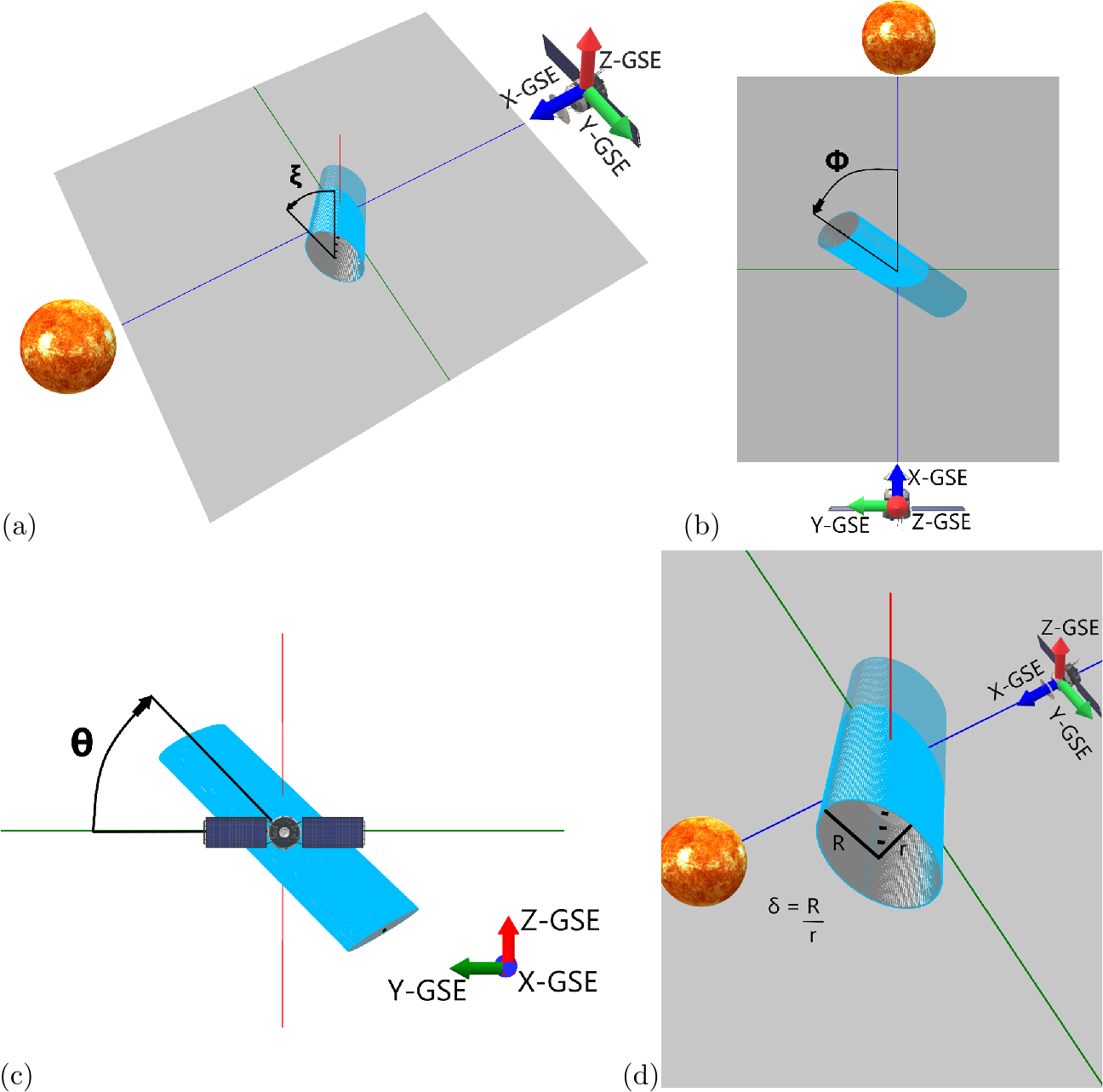Due to the lapse in federal government funding, NASA is not updating this website. We sincerely regret this inconvenience.
Machine Learning Study Identifies the Internal Structure of
Interplanetary Coronal Mass Ejections

This illustration shows a coronal mass ejection erupting from the Sun (left) and the resulting solar storm colliding with Earth’s protective magnetic field, the magnetosphere (right). Such storms can create hazardous conditions for satellites orbiting the planet. Image by Steele Hill, NASA Goddard Space Flight Center.
In a machine learning (ML) study supported by the NASA Center for Climate Simulation (NCCS), NASA Goddard Space Flight Center and university heliophysics researchers have gained insights into the internal structure of interplanetary coronal mass ejections (ICMEs)—gigantic clouds of magnetized gas that erupt from the Sun and travel through the solar system.
Study results were published in the journal Solar Physics and presented at the virtual 2020 American Geophysical Union (AGU) Fall Meeting in December by Luiz Fernando Guedes dos Santos, research assistant in NASA Goddard’s Heliospheric Physics Laboratory and a PhD candidate in the Department of Physics at the Catholic University of America.
ICMEs are the main drivers of space weather that can damage satellites and power grids if they hit Earth’s magnetosphere (protective magnetic field) in the right locations. From observations by NASA’s Wind spacecraft, scientists hypothesize that ICMEs consist of flux ropes, bundles of twisted magnetic field lines that wrap around a common axis into tubes (see images below).

Sketch of a flux rope generated using the elliptic-cylindrical flux rope model from different points of view: (a) Overview of the flux rope and the ecliptic plane (plane XY) showing the rotation about the central axis (ξ). (b) View of the flux rope along the Z-axis. (c) View from the Earth to Sun direction (i.e., spacecraft point of view).(d) Cross-section view of the flux rope. Reproduced from dos Santos et al. 2020.
NASA Wind mission data played important roles in the ML study, which took the form of a deep neural network using both observed (Wind) and synthetic (physics-based and empirical model) image data to “train” the computer to recognize a wide variety of ICME flux rope structures. The researchers leveraged a proven handwriting recognition model for the neural network and designed the study data to be compatible with it.
The 50 rounds (“epochs”) of neural network training used CPU and GPU resources on the NCCS ADAPT Science Cloud, with input data of 738,000 images coming from NCCS mass storage.
The neural network model then ran on a Heliospheric Physics Laboratory GPU system. The model was able to identify flux rope signatures with high accuracy when comparing the results to a catalog of 353 Wind ICME observations from 1995–2015 (see plots below). It correctly classified 84% of simple real cases and 76% of a broader set of cases.

Plots showing the proportion of the number of interplanetary coronal mass ejection (ICME) events of each class from the reference catalog (left) and the predictions made by three machine learning (ML) models (right). Reproduced from dos Santos et al. 2020.
(a) Left: Stacked bar plot for the classification, including more complex-structure (Cx) events. In the catalog, the proportion of events with no flux rope signature (NFR)—is 67/231 (21%). Right: In the ML model predictions, the proportion of NFR events is 206/321 (64%) with no fluctuations (noise) applied to the data, 75/321 (23%) for 5% noise, and 85/321 (26%) for 10% noise.
(b) Left: Same plot as (a) but excluding Cx events. In the catalog, the proportion of NFR events is 16/270 (6%). Right: In the ML model predictions, the proportion of NFR events is 167/270 (61%) with no noise, 60/270 (21%) for 5% noise, and 76/270 (28%) for 10% noise.
After analyzing the discrepancies between the catalog and ML-based classification, the team continues discussing whether some events should be reclassified and how the classification criteria could be improved for future studies. The team also notes the need to further develop their flux rope models to include more observed features.
“Having access to NASA supercomputing resources enabled us to focus on the science and programming,” dos Santos said. “This was essential to give us peace of mind that we had all the computing power we needed to produce important scientific advances.”
Related Links
- dos Santos, L.F., A. Narock, T. Nieves-Chinchilla, M. Nuñez, and M. Kirk, 2020: Identifying Flux Rope Signatures Using a Deep Neural Network. Solar Physics, 295, no. 10, 131,
- NG004-0024 - Identifying Flux Rope Signatures Using a Deep Neural Network, Poster, 2020 American Geophysical Union Fall Meeting, 12/15/20 (registration required).
Jarrett Cohen, NASA Goddard Space Flight Center


